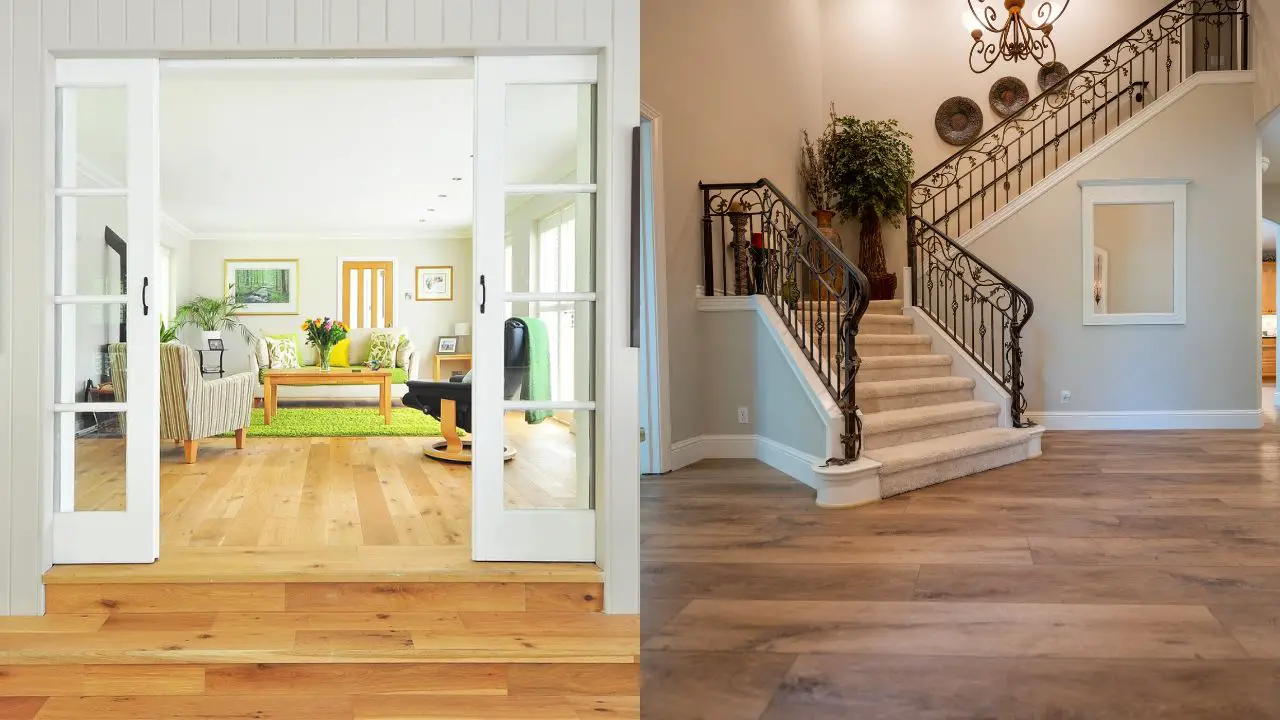Choosing the right flooring for your home is a big decision. It’s not just about looks—it’s about how your floor feels, how long it lasts, how easy it is to maintain, and of course, how much it costs. Two popular choices among homeowners today are engineered hardwood and LVP flooring (luxury vinyl plank). Both options offer unique benefits, but which one is better for your space? Let’s break it down in simple terms.
What Is Engineered Hardwood?
Engineered hardwood is made of real wood—but with a twist. The top layer is genuine hardwood, while the core is made from layers of plywood or fiberboard. This design makes it more stable than solid hardwood and better able to handle changes in temperature and humidity.
It comes in various wood species like oak, maple, and hickory, and it looks almost identical to solid hardwood because of its real wood surface. You can even sand and refinish it once or twice, depending on the thickness of the top layer.
What Is LVP Flooring?
LVP stands for Luxury Vinyl Plank. It’s a synthetic product designed to mimic the look of hardwood, but it’s made entirely from plastic and vinyl materials. Thanks to modern printing technology, LVP can look incredibly realistic—sometimes even fooling experienced eyes.
It’s made in layers too, including a tough wear layer on top that resists scratches, dents, and stains. Beneath that is the printed design and a waterproof core, making LVP ideal for places where moisture is a concern.
Look and Feel
When it comes to appearance, both engineered hardwood and LVP can look stunning. Engineered hardwood has a natural, warm look that only real wood can offer. Each plank is unique, with grain and texture variations that give it character.
LVP, on the other hand, uses high-quality images to mimic wood, and some types even have a textured surface that feels like wood. It’s available in a wide range of colors and styles—even ones that mimic exotic woods you might not afford in real hardwood.
That said, nothing truly beats the feel of real wood underfoot. Engineered hardwood feels more solid and rich, while LVP can feel a bit more “plastic” or hollow, depending on the quality.
Durability and Maintenance
Here’s where things get interesting.
Engineered hardwood is durable, but not indestructible. It’s more stable than solid hardwood, but it can still scratch or dent if you’re not careful—especially in high-traffic areas or homes with pets. It also doesn’t like too much water. While it’s more resistant than solid wood, large spills or standing water can cause damage over time.
LVP, in contrast, is waterproof. You can use it in bathrooms, basements, laundry rooms—anywhere moisture might be a problem. It’s also incredibly scratch and dent resistant, which makes it perfect for busy households with kids and pets. Plus, cleaning it is a breeze: just sweep and mop. No special products needed.
Installation: DIY or Pro Job?
If you’re handy and want to install your floor yourself, LVP is the easier option. Most LVP products have a click-lock design that snaps together easily without nails or glue. It can often be installed right over your existing floor, saving time and effort.
Engineered hardwood is a bit more involved. It can be floated, glued, or nailed down, depending on the type and where it’s going. While DIY is possible, many homeowners hire professionals for this job to make sure it’s done right.
Cost Comparison
Price is always a major factor. LVP is usually cheaper, both in terms of materials and installation. You can find high-quality LVP for $2–$5 per square foot, while engineered hardwood often runs between $4–$10 per square foot. Add in installation, and hardwood flooring can easily double the total cost.
But keep in mind—engineered hardwood can add more resale value to your home. Buyers often view real wood floors as a premium feature.
Where to Use Each Type
- Use engineered hardwood in living rooms, dining rooms, and bedrooms—spaces where you want a warm, classic look and where water isn’t a big issue.
- Use LVP in kitchens, bathrooms, mudrooms, and basements—anywhere water, messes, and heavy use are part of daily life.
Final Thoughts: Which One Wins?
There’s no one-size-fits-all answer. Both engineered hardwood and LVP have their strengths:
- Choose engineered hardwood if you want real wood beauty, a long-lasting investment, and are okay with a bit more care.
- Choose LVP if you want a budget-friendly, low-maintenance floor that can handle anything life throws at it.
Think about your lifestyle, budget, and where the flooring will go. Whichever you pick, both can make your home look and feel amazing.
FAQs
1. Can engineered hardwood go in a basement?
It can, but only if the basement is dry and stable. LVP is usually a better choice for below-grade areas.
2. Does LVP look fake compared to real wood?
High-quality LVP looks surprisingly realistic, especially with embossed textures. But real wood has a natural warmth that’s hard to duplicate.
3. Can I refinish engineered hardwood?
Yes, but only once or twice, depending on the thickness of the top wood layer.
4. Is LVP safe for pets?
Absolutely. It’s scratch-resistant and waterproof, making it ideal for homes with dogs or cats.
5. Which floor adds more value to a home?
Engineered hardwood typically adds more resale value because buyers still love the appeal of real wood.

